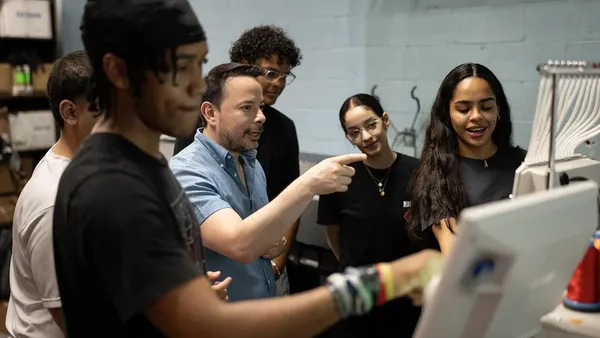Dive Brief:
- Most educators are familiar with Bloom’s Taxonomy, which organizes how students should learn, starting with the ability to recall basic facts and then moving into producing new work. But it's an idea that Ron Berger, chief academic officer for EL Education says is wrong, in a recent piece for Education Week.
- Berger believes the emphasis on having students go through different steps even before they can try their hand at a new skill, is not the inherent way students learn. People don’t learn to play the guitar by watching 100 videos — they both watch and practice at the same time.
- Students that are applying what they’re learning as they continue to study, produce what he says is “high-quality work while in school.”
Dive Insight:
The days when textbook learning and lectures dominated a curriculum are mostly gone. Today, administrators and educators are looking for more hands-on options, where students get to go on learning expeditions, hold historic objects as they study the past or don virtual reality (VR) goggles for a biology class.
Hands-on learning usually provides students with an opportunity to get personally involved with a project — and yes, use their hands. This type of learning is believed to be one of the more effective ways to embed lessons into students' minds, engaging them in the subject at hand.
A 2014 study published in the International Online Journal of Primary Education, found that “hands-on experiments promote students’ learning and build on their intrinsic motivation,” wrote the authors. Working with Year 4 students in Malaysia, who would be about 11 years old, the authors found that retention levels increased as well, that students “remembered better through hands-on experiments.”
Administrators don’t need to buy $400 VR goggles to get some hands-on learning into their classrooms, but they might need to give teachers more time to plan interactive lessons that ultimately will create a better learning experience for students.











